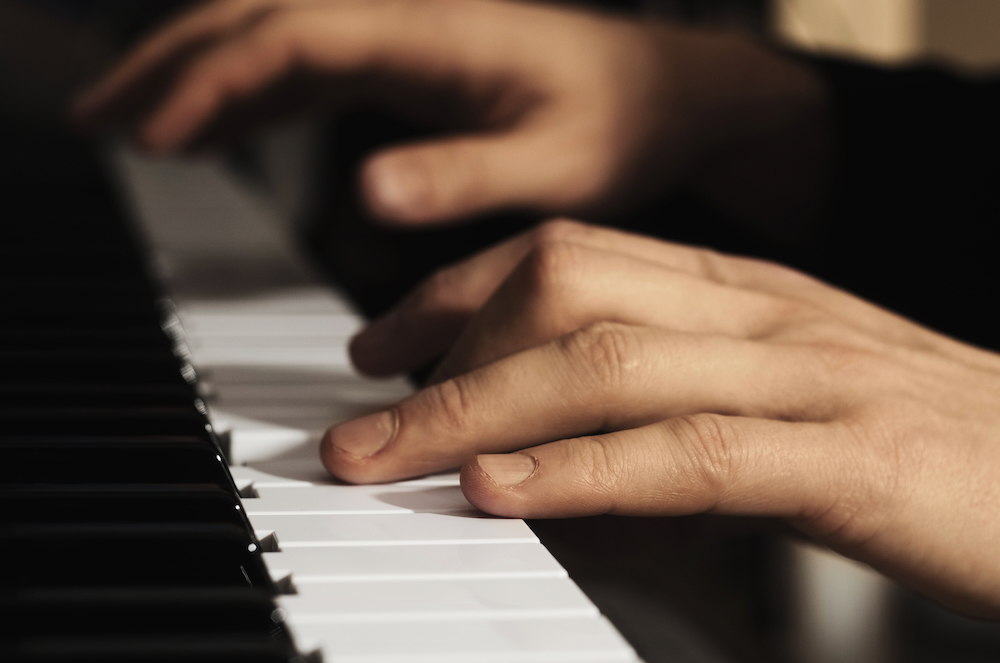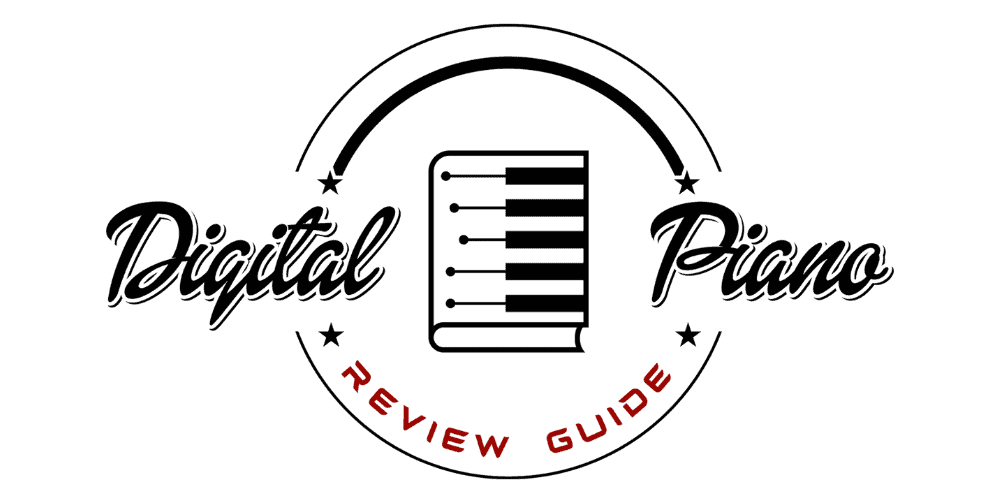Piano Fingers Chart – Piano Finger Placement Charts We Love

If you’re asking yourself how to know if your hands are placed correctly on the keyboard, and which fingers you should use to even begin playing on the piano, then you wouldn’t be the first. In this article, we’ll discuss proper hand position, learn about piano fingerings, list out all of the major and minor scale fingerings, and provide a piano fingers chart guide for reference when needed!
Playing the Piano with Correct Fingerings
If you’re a beginner pianist, you may be asking yourself what piano fingerings are. Before we jump to that though, let’s go over what proper hand position on the piano looks like.
Why Play With Proper Hand Position?

Before you even begin to play any kind of musical piece, you need to make sure that your hand are in proper position. Playing the piano isn’t just about hitting the correct notes or adding expression. It’s also about the ways in which you move (or don’t move) your body to transfer energy into the keys.
What do I mean by this? Well, most pianists have probably thought about how they should clean and protect their pianos, but do they give any thought to how they should prevent damage to themselves?
Poor posture can cause piercing pain in the neck, shoulders, and back, while poor hand position can give you stiff, achy fingers as if you had been writing all day. Tight wrists and forearms can put you at risk for carpal tunnel syndrome.
So, for starters, your posture is important, as is how you hold your wrists and forearms. And let’s not forget the most important things—your hands and fingers!
- You Might Also Like: A Major Piano Chord
What Is Proper Hand Position?

Let’s begin with the lower half of your body. Make sure that your bench is far enough from the piano that you can comfortably reach the keyboard in front of you, but not too far, or you won’t be able to reach the pedals.
Sit up straight and relax your shoulders. Keep your head up and look down at the keys when you need to, but don’t allow your body to hunch over. Also loosen your forearms and wrists—they should never feel tight or strained.
Then, allow your hands to relax. Your fingers should naturally curl as if you were holding a stress ball in each hand. Then, turn your hands over and place your fingertips on the keys. All of your fingers, except your thumb, should be curled, even the pinky.
Because it’s your smallest finger, you’ll be tempted to straighten it out, but if you do, you won’t be able to maintain the proper curled position for the rest of your hand and you won’t be able to build the hand strength you need to play the music you’re learning.
And last but not least, don’t forget to breathe! Especially as a beginner pianist, there’s a lot to remember and a lot to learn, but make sure you give yourself sufficient breaks.
Playing the piano with proper posture and hand position is not only meant to help you play better—it’s also meant to prevent injury and help you feel more comfortable physically while playing.
- You Might Also Like: B Flat Major Piano Chord
Tips For Your Hand Position
The following is a list of things to keep in mind when positioning your hands on the keyboard:
1. Relax your hands and your wrists.
2. Keep your fingers curved and your thumbs straight.
3. Sit up straight and keep your head up.
4. When playing notes at the farther ends of the keyboard, lean your body from side to side—don’t scoot yourself over on the bench!
What Are Piano Fingerings?
Okay, now we can get to piano fingerings.
The term “fingerings” is used to refer to the standard fingers which you use to play particular notes. Professional pianists recommend you use these fingers (however uncomfortable they may originally seem) to help you improve and maintain your hand position, play pieces smoothly, and build strength in your fingers.
Fingerings are often represented on sheet music as small numbers written either above or below a note. You’ll see them most often in beginner’s sheet music, but as you advance and become more accustomed to standardized fingerings, you’ll only see them to indicate that you should use a fingering which deviates from the norm.
Check out this image of a set of hands with their correlating numbers:

The numbers which correlate to each finger will always be the same. Start counting from the thumbs and work your way out, or in other words, your thumbs are 1, your index fingers are 2, your middle fingers are 3, your ring fingers are 4, and your pinkies are 5.
Keep reading below to see a master list of major and minor scales and their fingerings.
- You Might Also Like: C Major Piano Scale
Piano Fingers Chart
Please enjoy the various piano finger placement charts below.
Major and Minor Key Piano Fingerings
For all of the major and minor keys below, the first row or top row of numbers is for the left hand fingerings, and the second row or bottom row of numbers is for the right hand fingerings.
As you read the numbers from left to right, you’ll be moving up the keyboard, and as you read them from right to left, you’ll be moving down the keyboard.
C Major and A Minor
The piano fingerings for the C major scale are as follows:

And the piano fingerings for its relative scale, A minor, are:

D Major and B Minor
The piano fingerings for the D major scale are as follows:

And the piano fingerings for its relative scale, B minor, are:

E Major and C# Minor
The piano fingerings for the E major scale are as follows:

And the piano fingerings for its relative scale, C# minor, are:

F Major and D Minor
The piano fingerings for the F major scale are as follows:

G Major and E Minor
The piano fingerings for the G major scale are as follows:

A Major and F# Minor
The piano fingerings for the A major scale are as follows:

B Major and G# Minor
The piano fingerings for the B major scale are as follows:

And the piano fingerings for its relative scale, G# minor, are:

D♭ Major and B♭ Minor / C# Major and A# Minor
The piano fingerings for the D♭ major scale are as follows:

Please also note that the D♭ major scale shares the same notes as the C# major scale, and that the B♭ minor scale shares the same notes as the A# minor scale. Because of this the major scale fingerings and the minor scale fingerings are also shared.
E♭ Major and C Minor
The piano fingerings for the E♭ major scale are as follows:

F# Major and D# Minor / G♭ Major and E♭ Minor
The piano fingerings for the F# major scale are as follows:

And the piano fingerings for its relative scale, D# minor, are:

Please also note that the F# major scale shares the same notes as the G♭ major scale, and that the D# minor scale shares the same notes as the E♭ minor scale. Because of this the major scale fingerings and the minor scale fingerings are also shared.
A♭ Major and F Minor
The piano fingerings for the A♭ major scale are as follows:

And the piano fingerings for its relative scale, F minor, are:

B♭ Major and G Minor
The piano fingerings for the B♭ major scale are as follows:

Conclusion
So there you have it! All of the major scales, all of the minor scales, and their piano fingerings for both the left and right hands.
If you happen to be a visual learner, you can also check out the full scale piano fingers chart guide below.
Fingerings can be frustrating at the start, but for beginner pianists, they are one of the best tools to help you memorize scales and chords, build strength in your hands, and play notes smoothly as you move up and down the keyboard.
- You Might Also Like: Do You Need Long Fingers to Play Piano?
If this article helped you, please “like” our Digital Piano Review Guide Facebook page!






